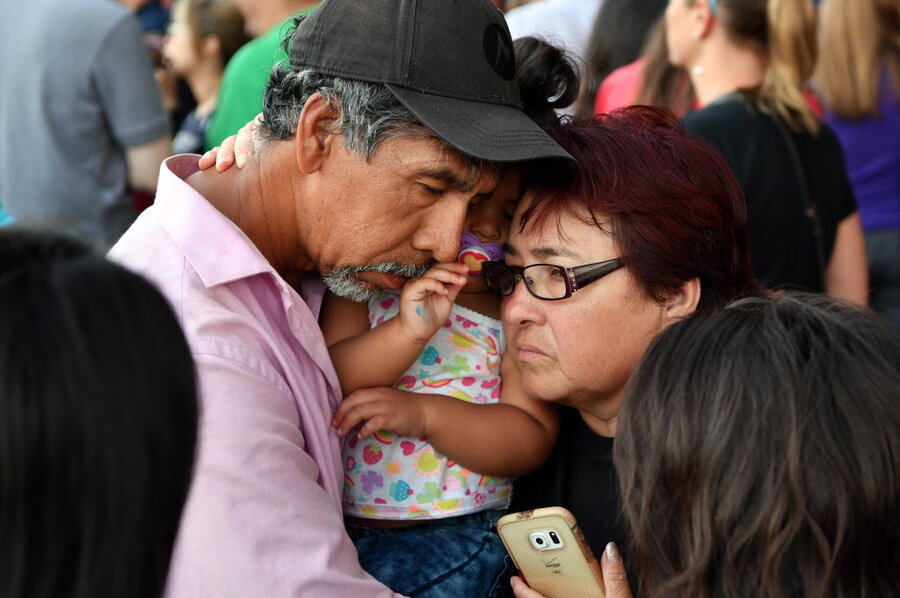California town that wildfires had spared faces new reality
Loading...
| Lower Lake, Calif.
Unlike many surrounding mountain hamlets and valleys, this hardscrabble Northern California town was spared last summer when wildfires engulfed large swaths of a region unaccustomed to their destructive power.
Lower Lake and its residents now well know a new reality.
A wildfire allegedly started by a resident of the area and fed by pines in the mountains and oaks that cluster on the rolling hills closer to town wiped out whole blocks, destroying more than 175 homes, businesses and other structures about a two-hour drive north of San Francisco.
The flames reached historic Main Street, where firefighters couldn't save an office of Habitat for Humanity, an organization that had been raising money to help rebuild homes in nearby communities torched a year ago.
Damin Anthony Pashilk of Clearlake, California was arrested Monday on 17 counts of arson and is in jail.
Pashilk, 40, is suspected of sparking the blaze that exploded over the weekend in Lower Lake. Officials said he is also suspected in several other fires over the past year in Lake County.
"Mr. Pashilk committed a horrific crime and we will seek prosecution to the fullest extent of the law. My thoughts continue to be with the people of Lake County during this difficult time," said California Department of Forestry and Fire Protection Director Ken Pimlott.
Several thousand people fled the blaze, some after ensuring their goats and chickens were safe. No one was reported hurt, and though the fire was just 5 percent contained and fire weather persisted, officials said Monday no other structures were directly threatened.
While firefighters worked in the surrounding countryside, in town crews swept up ash and worked to clear roads of fallen powerlines and telephone poles. Homes — some dating to the 1880s — were burned to their foundation. A wooden threshold in front of one home still carried the address but the house behind was gone. Other homes nearby were completely spared.
Lower Lake seemed safe Sunday morning from flames that first rose the afternoon before.
Like any other Sunday, Pastor John Pavoni spoke to his congregation and left after locking the front door to his small United Methodist church just off Main Street.
On Monday, he stood in front of burned rubble.
Previous fires in the area had not driven families away, he said.
"Those people have been through a lot," he said, "people will rebuild."
Lower Lake is home to about 1,300 mostly working class people and retirees who are drawn by its rustic charm and housing prices that are lower than the San Francisco Bay Area.
Last summer, during a devastating period from the end of July through September, three major blazes came within a few miles to the east and south of town.
Between them, the four blazes have destroyed more than 1,400 of the 36,000 housing units in all Lake County.
The Lake County blaze was one of 11 large wildfires in the state. In central California, a 2-day-old wildfire destroyed 12 structures, damaged others and threatened 200 homes. The wildfire near Lake Nacimiento, about 180 miles northwest of Los Angeles, grew to nearly 7 square miles and forced authorities to evacuate some residents by boat. It was 10 percent contained.
Weather conditions bedeviled firefighters Monday and the forecast called for temperatures to reach the upper 90s in coming days, with no rain in sight. A heat wave and gusty winds also put Southern California on high fire alert. Underlying it all: A five-year drought that has sapped vegetation of moisture.
Despite getting some rain last winter and spring, Lake County is tinder dry. Lawns in front of Lower Lake's modest, one-story homes are brown, matching the wildland grasses on the mountains outside town.
In wetter times, the region was not visited by the kind of wildfires that now batter it.
Other than a pair of large blazes in the 1960s, which destroyed far fewer homes in a county that had just one-quarter its current 64,000 residents, lifelong resident and county supervisor Jim Comstock can't remember anything approaching the past year.
Residents have a new view of the wild beauty they've always admired. Comstock said when his wife sees tall grass, she wonders aloud when the property owner will cut it. After 1,500 acres burned last year on the 1,700-acre ranch where Comstock grew up and still lives, he has cleared out brush to make fire breaks — a ritual familiar to other Californians who live in areas traditionally associated with wildfires.
"Everybody is just on edge," he said. "The trees are beautiful, but when they catch fire, they carry fire."







